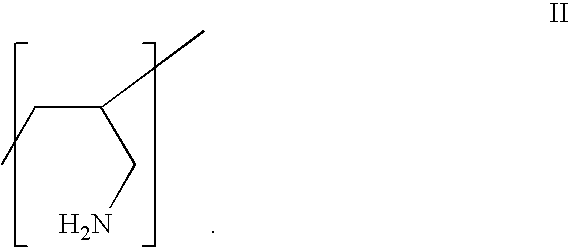Once A Day Formulation for Phosphate Binders
a phosphate binder and once a day technology, applied in the field of once a day formulation of phosphate binders, can solve the problems of inconvenient patient medication taking, severe abnormalities in calcium and phosphorus metabolism, and inability to meet patient requirements, so as to improve patient compliance and phosphate binding effectiveness, and reduce the frequency of phosphate binder administration.
- Summary
- Abstract
- Description
- Claims
- Application Information
AI Technical Summary
Benefits of technology
Problems solved by technology
Method used
Image
Examples
example 1
Equivalence of Once a Day and Three Times a Day Sevelamer Dosing
[0063]Sevelamer hydrochloride, a metal free, nonabsorbed polymer is approved for controlling phosphorus in chronic kidney disease (CKD) patients on hemodialysis when dosed three times a day with meals.
[0064]The objective of this study was to evaluate the equivalency of once a day and three times a day sevelamer dosing.
[0065]After a 2 week sevelamer run-in period, 18 patients were randomized to either sevelamer dosed once a day with the largest meal for 4 weeks followed by standard three times per day dosing with meals for another 4 weeks; or sevelamer dosed three times per day with meals for 4 weeks followed by once a day dosing with the largest meal for another 4 weeks. Serum phosphorous, calcium corrected for albumin, calcium phosphorous product (Ca×P), albumin, intact parathyroid hormone (iPTH), total-cholesterol (total-C), low density lipoprotein cholesterol (LDL-C), high density lipoprotein cholesterol (HDL-C), and...
PUM
| Property | Measurement | Unit |
|---|---|---|
| dosage frequency | aaaaa | aaaaa |
| frequency | aaaaa | aaaaa |
| aliphatic amine | aaaaa | aaaaa |
Abstract
Description
Claims
Application Information
 Login to View More
Login to View More - R&D
- Intellectual Property
- Life Sciences
- Materials
- Tech Scout
- Unparalleled Data Quality
- Higher Quality Content
- 60% Fewer Hallucinations
Browse by: Latest US Patents, China's latest patents, Technical Efficacy Thesaurus, Application Domain, Technology Topic, Popular Technical Reports.
© 2025 PatSnap. All rights reserved.Legal|Privacy policy|Modern Slavery Act Transparency Statement|Sitemap|About US| Contact US: help@patsnap.com



